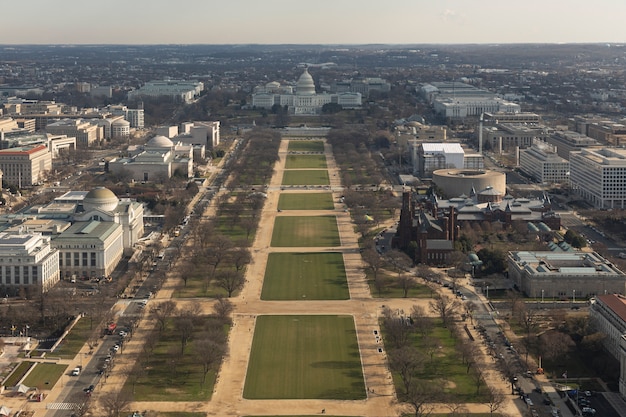Analyzing US Arms Control Treaties Effectiveness in 2025

Analyzing the Effectiveness of US Arms Control Treaties in 2025 involves assessing their impact on global security, considering factors like technological advancements, geopolitical shifts, and verification mechanisms in the context of United States national interest and international obligations.
The landscape of international security is ever-evolving, making the analyzing the effectiveness of US arms control treaties in 2025 a crucial endeavor. Are these agreements, designed to limit the proliferation and use of weapons, truly achieving their objectives in a world of shifting alliances and emerging technologies?
Analyzing US Arms Control Treaties in a Changing World
Arms control treaties are designed to promote stability and reduce the risk of conflict by limiting the development, production, and deployment of certain types of weapons. However, the effectiveness of these treaties is constantly challenged by technological advancements, shifting geopolitical landscapes, and the behavior of state and non-state actors.
Understanding whether US arms control treaties are effective in 2025 requires a comprehensive analysis of various factors, including the treaty’s original goals, its implementation, its verification mechanisms, and its impact on the broader security environment.

The Evolution of Arms Control Treaties
Arms control treaties have a long history, dating back to ancient times. However, the modern era of arms control began in the 20th century, with the rise of nuclear weapons and the Cold War. These treaties have evolved to address new technologies and security challenges, but their fundamental goal remains the same: to reduce the risk of conflict and promote stability.
Historical Context of US Arms Control Treaties
The US has been a key player in the development and implementation of arms control treaties. From the Limited Test Ban Treaty of 1963 to the Strategic Arms Reduction Treaty (START) of 1991, the US has sought to limit the proliferation and use of nuclear weapons, as well as other types of weapons. These treaties can be seen as attempts to formalize limitations and expectations between global powers.
Key Treaties and Their Objectives
Several key arms control treaties have shaped the international security environment. These include:
- The Nuclear Non-Proliferation Treaty (NPT): Aims to prevent the spread of nuclear weapons and promote cooperation in the peaceful uses of nuclear energy.
- The Chemical Weapons Convention (CWC): Prohibits the development, production, stockpiling, and use of chemical weapons.
- The Biological Weapons Convention (BWC): Prohibits the development, production, stockpiling, and use of biological weapons.
These treaties have had varying degrees of success, but they have all played a role in shaping the international security environment. Understanding their objectives and limitations is crucial for evaluating their effectiveness in 2025.
In conclusion, the evolution of arms control treaties reflects the changing nature of warfare and international relations. As new technologies emerge and geopolitical landscapes shift, these treaties must adapt to remain effective.
Factors Influencing Treaty Effectiveness
The effectiveness of an arms control treaty depends on a variety of factors, including its scope, its verification mechanisms, and the political will of the parties involved. A treaty that is comprehensive, verifiable, and supported by all relevant parties is more likely to be effective than one that is not.
Analyzing several key aspects of the global security landscape can give invaluable insight on its effectiveness come 2025.
Verification and Compliance
One of the biggest challenges in arms control is ensuring that parties are complying with their treaty obligations. Effective verification mechanisms are essential for building trust and confidence in the treaty. These mechanisms may include on-site inspections, data exchanges, and national technical means of verification (such as satellite imagery).
Geopolitical Shifts and Treaty Relevance
The effectiveness of an arms control treaty can also be affected by geopolitical shifts. For example, a treaty that was designed to address a specific threat may become less relevant if that threat diminishes or if new threats emerge. Additionally, changes in the political landscape can affect a country’s willingness to comply with a treaty. The shifts in international cooperation can undermine former agreements.
Technological Advancements and New Challenges
- Cyber warfare: The emergence of offensive cyber capabilities poses a new challenge to arms control, as these capabilities are difficult to define, detect, and verify.
- Artificial intelligence: AI is being used to develop new weapons systems, raising concerns about the potential for autonomous weapons and the erosion of human control over the use of force.
- Space-based weapons: The development of space-based weapons could undermine the stability of the international security environment, as these weapons could be used to attack satellites and disrupt communications.
In conclusion, the effectiveness of arms control treaties depends on a complex interplay of factors, including verification and compliance, geopolitical shifts, and technological advancements. Addressing these challenges is essential for ensuring that arms control treaties remain relevant and effective in the 21st century.

The Role of Technology in Monitoring Arms Control
Technology plays a crucial role in monitoring arms control treaties. From satellite imagery to on-site inspection equipment, technology can help to verify compliance and detect violations. However, technology also presents new challenges, as new weapons systems are developed and new methods of concealment are devised.
The evolution of technology can often be at odds with the progress of arms control and agreements on global weapon limitations.
Satellite Imagery and Remote Sensing
Satellite imagery and remote sensing technologies are essential tools for monitoring arms control treaties. These technologies can be used to detect the construction of new facilities, the movement of military equipment, and other activities that may be in violation of a treaty. Commercial satellite imagery is available to anyone, making it more difficult for countries to conceal their activities.
Cybersecurity and Data Analysis
Cybersecurity is becoming increasingly important for monitoring arms control treaties. Data analysis can be used to identify patterns and anomalies that may indicate a violation of a treaty. Cybersecurity measures are needed to protect the data used to monitor arms control treaties from hacking and manipulation. Protecting this data will be crucial.
Challenges Posed by Emerging Technologies
Emerging technologies, such as artificial intelligence, present new challenges for monitoring arms control treaties. For example, AI could be used to develop new weapons systems that are difficult to detect or verify. AI could also be used to automate the process of monitoring arms control treaties, potentially reducing the need for human inspectors.
In conclusion, technology plays a vital role in monitoring arms control treaties. However, it also presents new challenges. Addressing these challenges is essential for ensuring that arms control treaties remain effective in the face of rapid technological change.
The Impact of US Foreign Policy
US foreign policy plays a significant role in shaping the effectiveness of arms control treaties. The US is a major player in the international security environment, and its actions can have a profound impact on the willingness of other countries to comply with arms control treaties.
Being such an established global force allows the US to dictate the terms of discussion and compliance of other countries, which can, at times, be limited.
Bilateral and Multilateral Agreements
The US has pursued both bilateral and multilateral arms control agreements. Bilateral agreements, such as the New START Treaty with Russia, are negotiated between two countries. Multilateral agreements, such as the Nuclear Non-Proliferation Treaty, are negotiated among a larger group of countries. Both types of agreements can be effective, but they have different strengths and weaknesses.
Sanctions and Enforcement Mechanisms
Sanctions and enforcement mechanisms can be used to encourage compliance with arms control treaties. Sanctions can be imposed on countries that violate a treaty, while enforcement mechanisms can be used to ensure that countries are complying with their obligations. The effectiveness of sanctions and enforcement mechanisms depends on the willingness of the international community to support them.
US Leadership and International Cooperation
- Promoting dialogue: The US can use its diplomatic influence to promote dialogue and negotiation on arms control issues.
- Building trust: The US can work to build trust and confidence among countries by sharing information and verifying compliance with arms control treaties.
- Enforcing norms: The US can work to enforce international norms against the proliferation and use of weapons of mass destruction.
In conclusion, US foreign policy plays a crucial role in shaping the effectiveness of arms control treaties. By pursuing both bilateral and multilateral agreements, using sanctions and enforcement mechanisms, and promoting international cooperation, the US can help to reduce the risk of conflict and promote stability.
Future Challenges and Opportunities
The future of arms control treaties will be shaped by a number of challenges and opportunities. These include the rise of new technologies, the changing geopolitical landscape, and the need for greater international cooperation. Addressing these challenges and seizing these opportunities will be essential for ensuring that arms control treaties remain relevant and effective in the years to come.
Being able to rise to the occasion and adjust plans in order to prepare for these challenges is how many nations, including the US, will approach arms control.
Adapting to New Technologies
Arms control treaties must adapt to new technologies, such as cyber weapons, artificial intelligence, and space-based weapons. This will require developing new verification mechanisms and addressing the challenges posed by these technologies. It will also require a willingness to engage in dialogue and negotiation with other countries on these issues.
Strengthening International Cooperation
Strengthening international cooperation is essential for ensuring the effectiveness of arms control treaties. This will require building trust and confidence among countries, sharing information, and working together to enforce norms against the proliferation and use of weapons of mass destruction.
The Role of Verification Technologies in the Future
- Advanced sensors: New sensors can be used to detect chemical and biological weapons, as well as nuclear materials.
- Artificial intelligence: AI can be used to analyze data and identify patterns that may indicate a violation of an arms control treaty.
- Cybersecurity: Cybersecurity measures can be used to protect the data used to monitor arms control treaties from hacking and manipulation.
In conclusion, the future of arms control treaties will be shaped by a number of challenges and opportunities. By adapting to new technologies, strengthening international cooperation, and investing in verification technologies, the international community can ensure that arms control treaties remain relevant and effective in the years to come.
Measuring Success: Metrics for 2025
Measuring the success of US arms control treaties in 2025 requires a multi-faceted approach. It’s not enough to simply count the number of weapons eliminated or the number of countries that have joined a treaty. A more comprehensive assessment is needed, taking into account the broader security environment, the impact on regional stability, and the long-term effects on international norms.
Being as objective as possible can help when performing measurements in these cases. Bias can skew results and affect future strategies.
Quantitative vs. Qualitative Assessments
Quantitative assessments may include metrics such as:
- The number of weapons eliminated or reduced under a treaty.
- The number of countries that have joined a treaty.
- The amount of money spent on implementing a treaty.
Qualitative assessments may include metrics such as:
- The impact of a treaty on regional stability.
- The long-term effects of a treaty on international norms.
- The level of trust and confidence among countries.
Case Studies: Evaluating Specific Treaties
Analyzing specific treaties, such as the New START Treaty or the Chemical Weapons Convention, can provide valuable insights into the effectiveness of arms control. Case studies should examine the treaty’s original goals, its implementation, its verification mechanisms, and its impact on the broader security environment.
Adjusting Strategies Based on Data
The assessment of arms control treaties should be an ongoing process, with strategies adjusted based on data and feedback. This requires a willingness to be flexible and adapt to changing circumstances. It also requires a commitment to transparency and accountability.
In conclusion, measuring the success of US arms control treaties in 2025 requires a multi-faceted approach, taking into account both quantitative and qualitative factors. This assessment should be an ongoing process, with strategies adjusted based on data and feedback.
| Key Point | Brief Description |
|---|---|
| 🤝 International Cooperation | The need for nations to collaborate on arms control efforts. |
| 🛰️ Verification Technologies | The role of tech in monitoring treaty compliance. |
| 🛡️ Treaty Effectiveness | Factors influencing how effective current treaties have become. |
| 🚀 Adapting Strategies | Flexible approaches to account for new security climates. |
FAQ
▼
Arms control treaties are agreements between countries to limit the production, use, or proliferation of certain types of weapons, aiming to reduce the risk of conflict.
▼
Analyzing their effectiveness is crucial to ensure they’re meeting goals, adapting to new threats, and promoting global security and international cooperation efforts.
▼
Key factors are verification, and compliance, geopolitical shifts, and technological advancement, all of which can affect how successful a treaty can achieve.
▼
Technology like satellite imagery, cybersecurity, and data analytics provides a way to ensure compliance and detect when a treaty has been violated.
▼
Some challenges include emerging technologies in cooperation between countries, creating new opportunities for strengthening and improving future treaties.
Conclusion
In conclusion, analyzing the effectiveness of US arms control treaties in 2025 suggests a landscape shaped by technological advancements, geopolitical shifts, and the imperative of international cooperation. As new challenges emerge, adapting strategies, strengthening verification mechanisms, and promoting dialogue will be crucial for ensuring these treaties continue to contribute to global security and stability. The effectiveness of global protection is a continuously ongoing effort, and will continue to change as time goes on.





